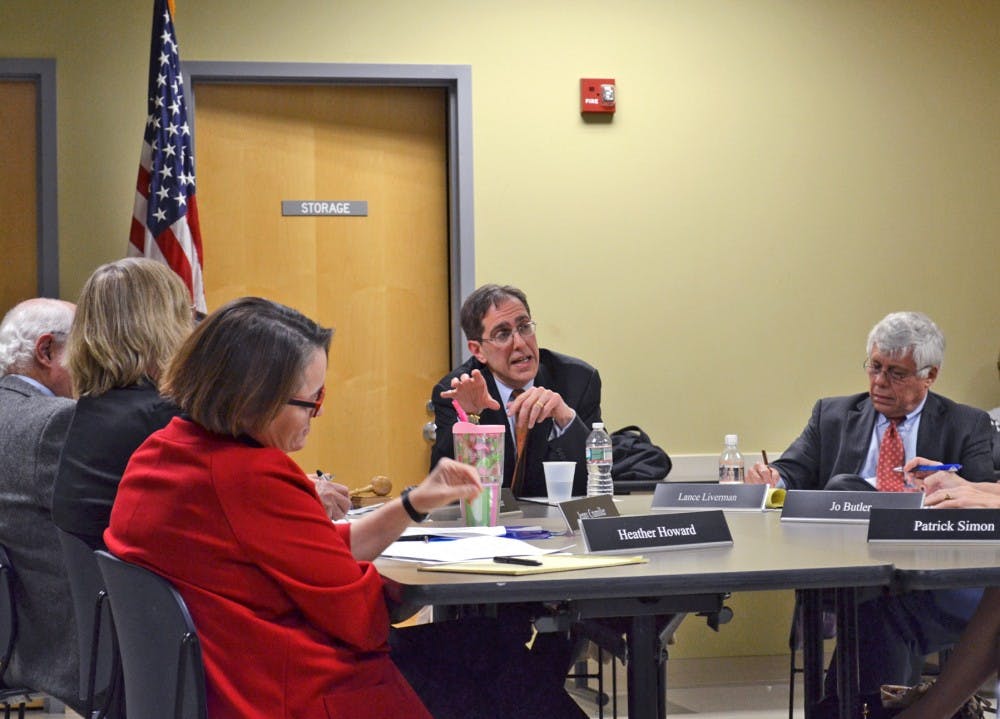As University President Christopher Eisgruber ’83 met publicly with town leaders and residents on Monday night for the first time since his September installation, the discussion touched on old town-gown tensions but also addressed ways to improve the University’s relationship with town government.
Current negotiations regarding the University’s annual voluntary contribution to the town budget were excluded from Monday’s discussion, Mayor Liz Lempert announced at the beginning of the meeting, which was held in the town hall. Lempert, whose husband is a University professor, has recused herself from the negotiations.
In response to a question from council member Patrick Simon about the stress that the development of the Arts and Transit neighborhood places on the community, Eisgruber responded that he is regretful of the “scars” the project has left on the town but that he is still in the process of listening to community concerns before forming a concrete plan of action.
Several members of the community expressed their disagreement with the University’s relocation of the Dinky station. President of Save the Dinky Anita Garoniak said that the Dinky has seen an 11 percent decrease in ridership between July and September of this year due to the ongoing construction.
“I miss the days when we could view the University as our friend, and not our adversary,” Peter Marks, who grew up in Princeton as the son of a professor, said. He explained that he was disappointed at both the Dinky relocation and the “fractured relationship” between the University and the town, a concern mentioned by several other citizens.
diversity report releasedHe described diversity as a common interest for both the town and the University.

“If you look at the University in terms of underrepresented groups, we are doing much better at, to use the proverbial phrase, ‘looking like America,’ at the undergraduate level than we are in those other aspects of the University,” Eisgruber noted.
He added that the University hopes to achieve more socioeconomic diversity among its undergraduate population. He also explained that expanding the undergraduate class size would allow the Office of Admission to accept qualified students who could not be included in the University’s current class, which regularly has an acceptance rate of about 7 percent.
When asked about legacy acceptances, Eisgruber said that the University has a “very special relationship with its alumni,” which sometimes “overwhelms” visitors. He added that legacy status is used only as a tiebreaker in the admission process and that legacy students have the same qualifications as their peers. He added that he wanted the University to more extensively publicize the benefits of its financial aid offerings to reach a broader pool of applicants.
Eisgruber praised the town for its help in addressing the campus meningitis outbreak, a “very serious problem” that requires productive collaboration between the town and the University.

The meeting served as an informal opportunity to introduce Eisgruber to members of the town community. It was the first gathering of its kind, according to Lempert.
“I see it as a welcome step in improving on and building on our town-gown relationship,” Lempert said of the meeting.
Eisgruber told town council members and residents that his three general responsibilities as president are advancing the University’s mission through outstanding research, moving current initiatives forward and formulating a unique agenda for his term.
The meeting was also attended by Vice President Robert Durkee ’69, Director of Community and Regional Affairs Kristin Appelget, Council President Bernie Miller and Council Members Lance Liverman, Jo Butler, Patrick Simon, Heather Howard and Jenny Crumiller.








